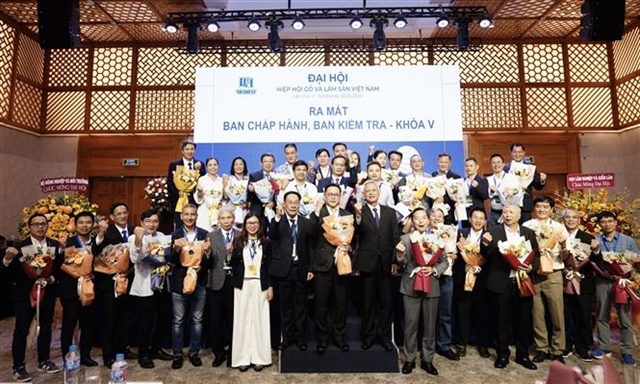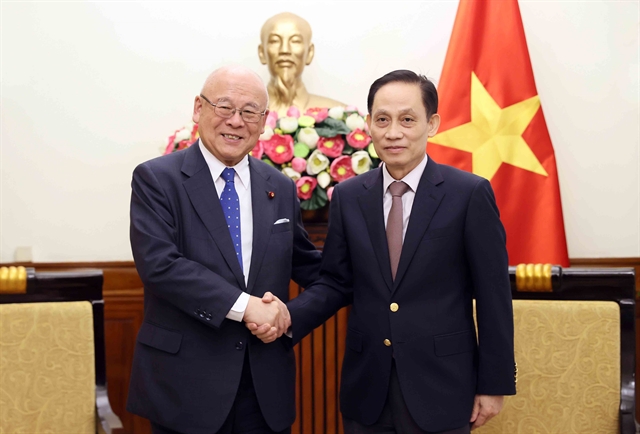 Life & Style
Life & Style
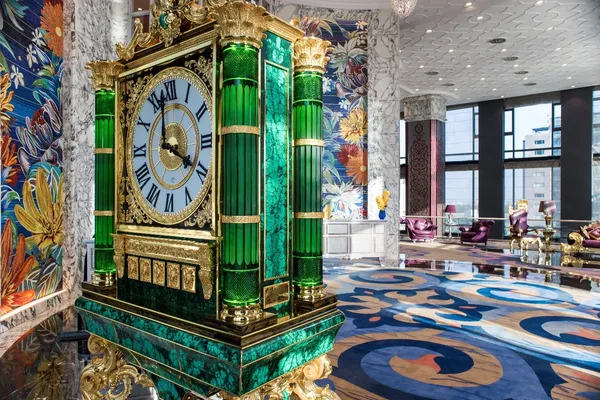

|
| The orgininal statue of Tara/Avalokiteshvara is on display at the Đà Nẵng City Museum of Chăm Sculpture. An exhibition on showing 19 National Treasures for the first time to the public is introduced at the museum from November 19 to December 25. VNS Photos Công Thành |
ĐÀ NẴNG – History comes alive as 19 National Treasures are revealed to the public for the first time at the National Treasures-Heritage event held at the Museum of Chăm Sculpture in the heart of Đà Nẵng.
The exhibition features 14 original national treasures, including artefacts from ancient Vietnamese communities dating from the third to the first century BC, and items representing the Sa Huỳnh and Champa cultures that shaped the central region of Việt Nam from the seventh to the 13th century.
“The exhibition helps visitors explore an original back journey to the history of central Việt Nam in ancient times. It shows off artefacts from different civilisations and cultures of Đông Sơn, Champa, Sa Huỳnh and skillful craftsmanship of the communities in the region,” said the museum’s director, Lê Thị Thu Trang.
“It also offers a real experience opportunity for both domestic and international tourists in seeking traditional customs and lifestyle of communities living through ancient cultural times in central Việt Nam from previous centuries.”
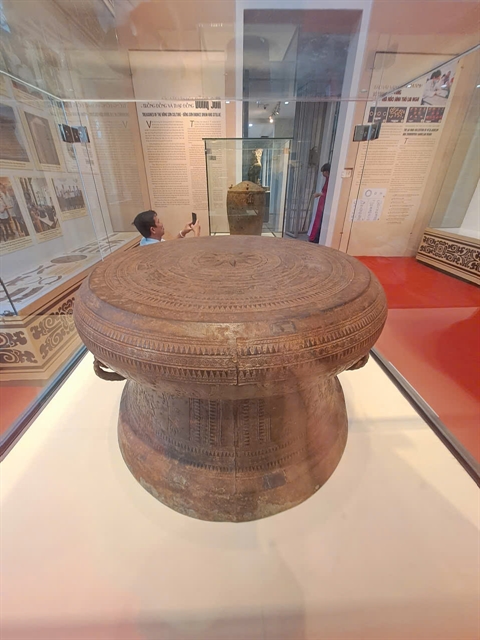
|
| The Đông Sơn bronze drum is on showed at an exhibition in Đà Nẵng City. A collection of 19 national treasures is opened to the public in the city between November 19 and December 25. |
The exhibition features artefacts including the statue of Tara/Avalokiteshvara, Đông Sơn bronze drums and situlae, Ekamukhalinga, the head of a Shiva statue and other significant items.
The museum has also set aside a space for live craft demonstrations, showcasing pottery, brocade weaving and paper making for visitors touring the museum in celebration of Việt Nam’s National Heritage Day, she added.
The exhibition underscores the vital role of heritage in the city’s sustainable development, situated at the heart of world heritage sites such as the ancient town of Hội An, Mỹ Sơn Sanctuary and Huế Monument Complex.
The Chăm Sculpture Museum was established on the west bank of the Hàn River in late 1915, with significant contributions from Henri Parmentier, a leading archaeologist with L’Ecole Française d’Extrême-Orient (the Far East Archaeological Research Institute) in Hà Nội.
In mid-1919, Parmentier published the museum’s first catalogue, marking its official inauguration.
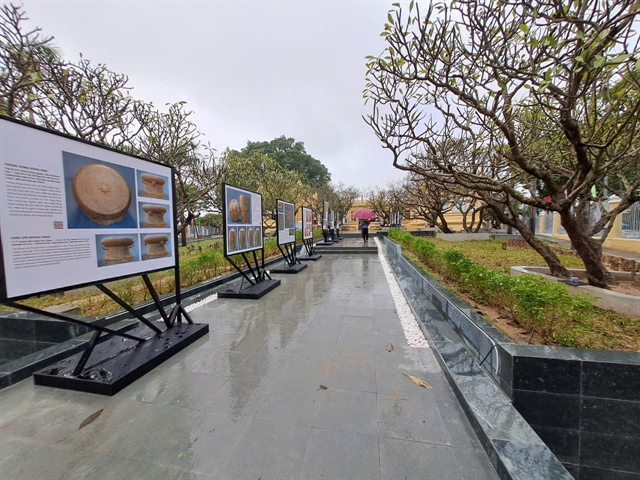
|
| Photos of 19 national treasures are on displayed at the Đà Nẵng City's Museum of Chăm Sculpture from November 19 to December 25. |
The museum is regarded as a unique showcase, displaying thousands of artefacts and sandstone statues uncovered at numerous Chăm towers and excavations, including items from the Sa Huỳnh Culture, which date back 2,500 to 3,000 years in the central region.

|
| Visitors explore artifacts at the Đà Nẵng City’s Museum of Chăm Sculpture. An exhibition on showing 19 National Treasures for the first time to the public was introduced at the museum. |
The museum preserves iconic sculptures and artworks of Chăm culture from the 5th to 15th century and is one of the most visited sites by both international and domestic tourists in Đà Nẵng City.
Recognised as a historical relic of the city, the museum houses national treasures for public display, including the Trà Kiệu Pedestal, the Mỹ Sơn E1 Pedestal, the statue of Tara/Avalokiteshvara, the Đồng Dương Pedestal, and two sandstone statues – Ganesha, one of the best-known and most worshipped deities in the Hindu pantheon, and Gajasimha, a mythical hybrid animal in Hindu mythology.
The museum also presents the history of Chăm towers, artefacts, and 20th-century French architecture, alongside the development of Đà Nẵng City. — VNS



